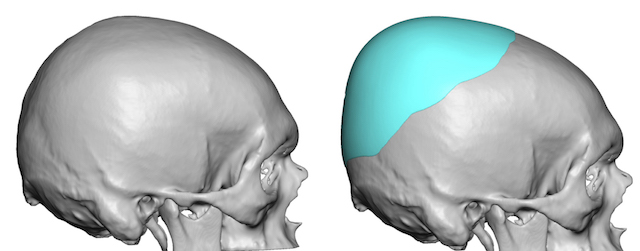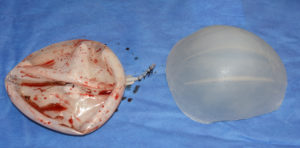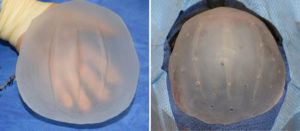Background: While skull augmentations are done all over the head, the most common area that both men and women share is the back of the head. The back of he head can mean a direct horizontal projection increase or one that is oriented more at 45 degrees at the upper occipital region. A horizontal augmentation is done for a vertical flat back of the head while an angulated augmentation is for crown of the skull deficiencies.
The most common skull augmentation in women is for the crown but is less so for men. Women usually seek crown augmentation to create a volume increase in the height of their hair. Men seek it to augment the actual shape of their scalp due to lack of hair or an exposed scalp. In either case to get an adequate skull augmentation one has to have enough scalp stretch to accommodate the implant placed underneath it.
Scalp expansion may be required when the desired skull augmentation is significant. One can debate as to what significant means but this roughly translates into maximum projection point of greater than 12mms or an implant volumes greater than 100 to 125ccs. First stage scalp expansion can be done either through the traditional serial inflation method (dynamic method) or, if need be, can be done using an adynamic method.

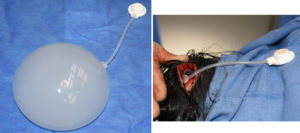
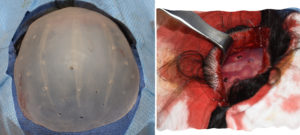
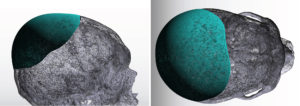
Case Highlights:
1) Significant crown of the skull augmentation will require a first stage scalp expansion in most patients.
2) Static scalp expansion can suffice in many cases of two stage skull augmentations.
3) Capsular releases are need in every case of scalp expansion to secondarily place the custom skull implant.
Dr. Barry Eppley
Indianapolis, Indiana

